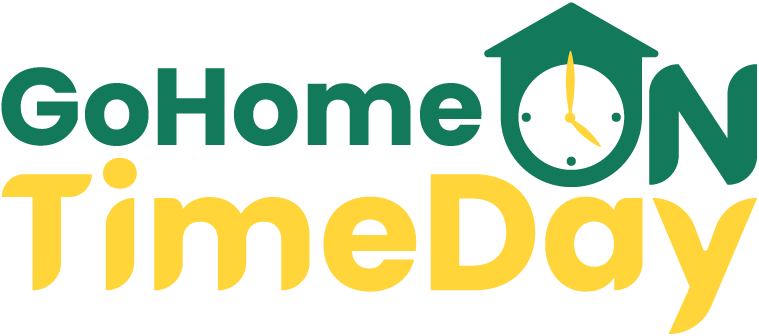Modern workspaces require out-of-the-box methods and progressive tactics. Decentralization – a strategy that allocates decision-making authority throughout every level of a company – serves as an excellent representation of these strategies.
This shift in command empowers employees, promotes efficient decision-making, offering numerous benefits for businesses of varying sizes. However, this model does present its own set of challenges.
Join us as we delve into the world of decentralized organizations and discover if this might be the right path for your business journey!
Understanding Decentralized Organizational Structure

In a decentralized organization, power is not reserved for the top brass. Instead, decision-making abilities extend to several individuals within the team, empowering more than just the leadership. This flattens the traditional hierarchy allowing mid to lower-level managers to execute on their decisions independently.
Such a setup allows upper management to focus on high-level strategies and major issues. Meanwhile, the day-to-day operations are overseen by middle and lower-level managers. Tasks including acquiring new business or resolving customer issues are often best executed locally.
Linking people to decision-making closer to the point of action, that’s where the beauty of a decentralized organizational structure 1 lies.
Differences Between Centralized and Decentralized Organizational Structures

Decentralized and centralized organizational structures exhibit significant differences in decision-making processes, accountability, and flexibility. These differences influence how power and authority are distributed within the organization, having a profound impact on its overall efficiency and effectiveness.
| Criteria | Centralized Organizational Structure | Decentralized Organizational Structure |
|---|---|---|
| Decision-Making Process | Decision-making powers reside with top management, leading to uniform decisions and a cohesive corporate image. However, the process can be slower due to the hierarchical structure. | Decision-making powers are delegated to lower-level managers or teams, fostering quick, efficient decisions that adapt to local dynamics. Involvement of team members in decisions can enhance motivation and job satisfaction. |
| Accountability | Upper management holds most responsibility, which can cause high-stress environments. Personal accountability at lower levels is less. | With powers delegated to lower levels, personal accountability increases. This fosters a sense of ownership and responsibility, which can lead to better overall performance and morale. |
| Flexibility | Less adaptable due to a top-down approach. Resistance to change can slow its response to market shifts. | Decentralized structures are highly adaptable, readily responding to market changes. They are better suited to constant business model changes and intense competition. |
An understanding of these differences can assist in devising a structure that aligns with your organization’s goals and market context. Regardless of leaning towards a decentralized or centralized structure, the aim should be a balanced power distribution that enhances organizational effectiveness.
Advantages of a Decentralized Organization

- Employee Empowerment: A decentralized organization allows employees at all levels to make autonomous decisions, resulting in increased job satisfaction and a feeling of ownership in their work.
- Efficient Decision-Making: By distributing decision-making power throughout the organization, faster and more efficient decision-making processes are facilitated.
- Expansion Opportunities: Decentralization enables organizations to better adapt to new markets or regions as local managers with a better understanding of the local market conditions are empowered.
- Crisis Management: During emergencies, decentralized organizations have an upper hand in responding quickly and effectively due to their agility and localized decision-making abilities.
These perks speak volumes about the positive impacts that a decentralized structure can have on organizational performance. To further explore these benefits, we present you with detailed case studies, showcasing how decentralization has empowered companies like Johnson & Johnson and Eventbrite to thrive in today’s dynamic business landscape.
Disadvantages of a Decentralized Organization

Despite its numerous advantages, the decentralized organizational structure comes with certain challenges that companies should be aware of:
- Localized Viewpoints: With decision-making power scattered across different branches, there can be localized viewpoints leading to a lack of cohesion in the overarching strategic direction. Individual departments or branches may act in their best interest, overlooking the larger goals of the organization. 1
- Inconsistent Procedures Across Branches: Decentralization can lead to inconsistency in procedures and policies across different branches, thereby potentially compromising quality control. 1
Addressing these potential drawbacks involves consistent and effective communication channels to ensure strategic goals alignment and standardized processes across all branches.
Examples of Decentralized Organizations
Johnson and Johnson, with its operations spread across multiple product lines and geographic regions, stands as a paradigm of the successful decentralized organization. The company has delegated decision-making powers and autonomy to its divisions, enabling rapid response to market changes.
Eventbrite, a player in the event management industry, has similarly decentralized its operations. By empowering local managers with decision-making authority, the company customizes its services to address specific market conditions and customer needs.
These examples demonstrate the effectiveness of decentralization in providing companies with flexibility, adaptability, and efficient decision-making capabilities.
How Can a Decentralized Organizational Structure Improve Time Management?
A decentralized organizational structure holds the potential to enhance time management by addressing the understanding poor time management root causes. With decision-making distributed across various levels, employees are empowered to make timely choices, reducing bottlenecks and streamlining processes. By fostering autonomy and accountability, decentralized structures enable efficient allocation of resources and foster a culture of effective time management.
Tips for Implementing a Decentralized Organization
Sailing through the journey of implementing a decentralized structure can be challenging but rewarding. Here are some tips to facilitate the transition:
- Strategic Planning: Plan and articulate clear goals for the organization’s decentralization journey.
- Effective Communication: Clearly convey the rationale behind the change, along with the benefits and expectations for all employees.
- Promote Collaboration: Encourage teamwork across different departments and levels of the organization.
- Provide Training and Support: Equip all employees with necessary training and resources to thrive.
- Decentralize Decision-Making: Delegate decision-making authority to lower-level managers in their areas of expertise.
- Continual Feedback: Establish feedback mechanisms with employees to promote continuous improvement.
- Stay Adaptable: Evaluate and modify the decentralized structure based on market conditions and organizational needs.
Conclusion
In conclusion, decentralization brings numerous advantages to organizations. It empowers employees, spurs efficient decision-making, offers expansion opportunities, and bolsters crisis management strategies.
While localized viewpoints and inconsistent procedures across branches may be potential drawbacks, the benefits of a decentralized structure outweigh the challenges when carefully managed.
So consider the current structure of your organization and ponder whether decentralization might unlock its full potential.
FAQs
- What is a decentralized organizational structure?
In a decentralized organizational structure, decision-making powers aren’t confined to top management. They’re shared across various levels of the business, fostering a flat hierarchy. - How does a decentralized organization work?
In a decentralized organization, control over daily operations and decisions extends to lower-level managers and team members, promoting trust and autonomy. - What are the advantages of a decentralized structure?
A decentralized structure paves the way for faster decision-making since it doesn’t necessitate upper management approval. It can also lead to improved customer service and encourage business growth. - Are there any downsides?
Despite many benefits, a decentralized structure can lead to poor leadership or loss of control if it’s not implemented with careful planning. - Can you provide examples of businesses with a decentralized structure?
Retail chains and multinational corporations often utilize decentralized structures since local managers understand market conditions best in their areas. - Is a decentralized structure beneficial for small businesses?
Yes, a decentralized structure can help small businesses by enabling employees to take on more roles and streamline operations. It cultivates leadership skills and quickly adapts to shifting market needs.

